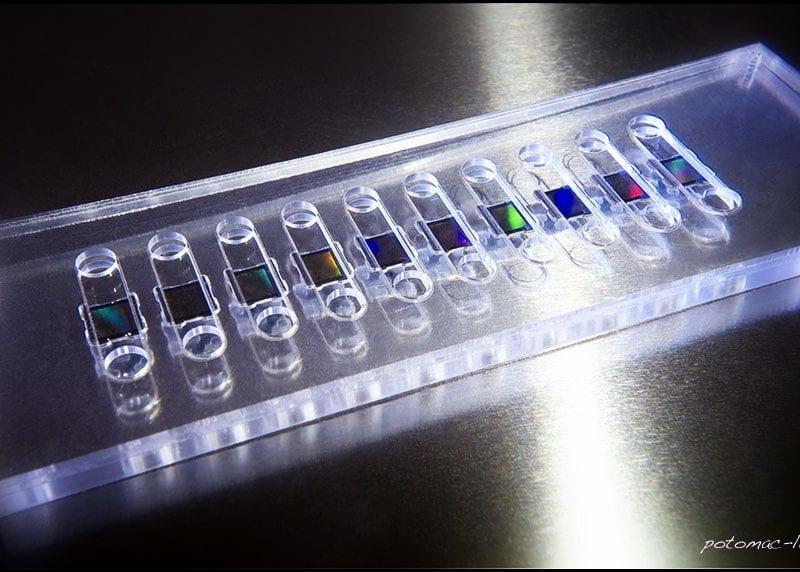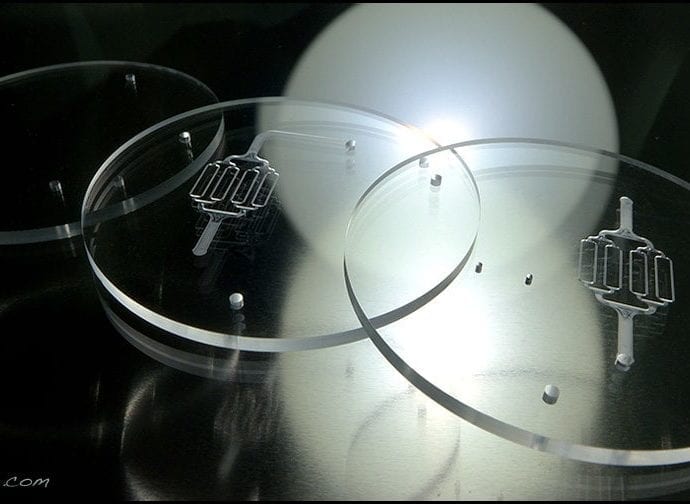POLY-METHYL METHACRYLATE (PMMA) is an inexpensive polymer that has become one of the most commonly used materials in microfluidic systems. Despite its low price, it exhibits the properties needed to fabricate good quality devices. PMMA is rigid and has excellent optical transparency. The polymer is also compatible with electrophoresis, which is important for many types of research. Potomac routinely laser micro-machines PMMA with excellent results. We have also developed complementary processes for manufacturing microfluidic devices in production once prototypes are optimized. Bonding chip layers is an especially important process in building microfluidic chips. The process must create strong bonds while not allowing the fluid channels to collapse.
Individual layers of the device are first fabricated by using rapid microfabrication technologies such as lasers, micro-CNC, hot embossing, 3D printing, etc.
It is interesting that Schott, which started its manufacturing history more than 125 years ago in Germany as a glass factory, manufactures a new type of polymer increasingly used in microfluidics. Cyclic olefin copolymers (COC) are actually composites of multiple types of cyclic olefin monomers and ethene. In addition to its inexpensive cost COC is easy to fabricate and is quite moldable. COC manufacturer Topas has measured total light transmission at 91.4% while maintaining very low chromatic aberration. For that reason alone, it is now used in optical parts for cameras and laser printers. In microfluidic systems COC is also an excellent choice specifically because of its biocompatibility and high chemical resistance. It also can be sterilized with a wide variety of techniques.


